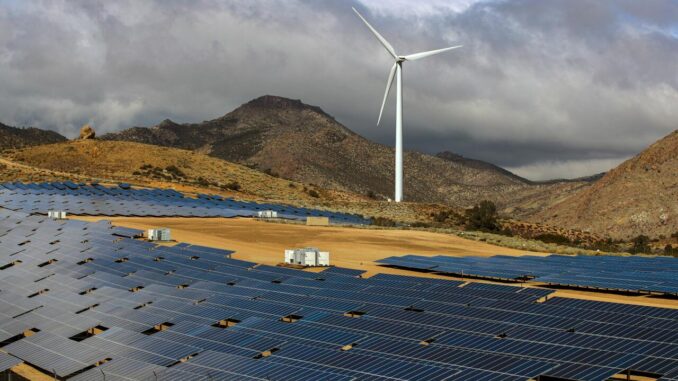
In a stunning revelation that underscores the pitfalls of California’s aggressive push toward “clean” energy, the California Public Employees’ Retirement System (CalPERS)—the nation’s largest public pension fund—has suffered a staggering 71% loss on a $468 million investment in renewable energy ventures.
This debacle, involving the CalPERS Clean Energy & Technology Fund (CETF) launched in 2007, has left the fund valued at just $138 million as of March 31, 2025, after accounting for over $22 million in fees paid to private equity managers.
What’s worse? CalPERS is refusing to disclose key details about the investments, citing legal exemptions for alternative assets, raising serious questions about transparency and accountability in the state’s green energy agenda.
The CETF, managed by Capital Dynamics, was heavily focused on U.S. solar projects during the early Obama-era clean energy boom.
Many of these ventures crumbled under competition from low-cost Chinese solar producers, echoing high-profile failures like Solyndra, which burned through over $500 million in taxpayer-backed loans before collapsing.
Critics, including public finance expert Marc Joffe from the California Policy Center, have blasted the fund as a prime example of the “combined dangers of private equity and ESG investment,” where “green credentials” take precedence over sound financial returns.
Joffe argues that CalPERS would have been far better off parking the money in a simple S&P 500 index fund, where it could have grown to around $3 billion today with dividends reinvested.
Do you live in California and have a Tax issue?
This isn’t an isolated incident but part of a broader trend where renewable energy investments, particularly in wind and solar, fail to deliver consistent returns to investors. Wall Street’s recent exodus from climate-focused groups highlights growing disillusionment, with initiatives halting activities amid underwhelming performance.
Even touted stocks like First Solar and GE Vernova are struggling to justify the hype, as billions poured into manufacturing projects yield diminishing results in a market flooded with cheaper alternatives.
The intermittency of wind and solar—dependent on weather and unable to provide baseload power—often leads to volatile returns, leaving investors exposed to policy shifts and technological shortcomings.
Compounding the issue, California’s relentless pursuit of Net Zero energy policies has driven electricity prices skyward, burdening consumers and businesses alike. The state’s Low Carbon Fuel Standard alone is projected to add up to $1.15 per gallon to fuel costs by 2046, while “summer blend” requirements tack on another $0.15 per gallon.
U.S. electricity prices overall have surged after years of green mandates, but California leads the pack: Residential rates have climbed from about 16 cents per kilowatt-hour in 2015—already 33% above the national average—to even higher levels today, outpacing inflation and squeezing households.
These policies have resulted in wealth destruction, deindustrialization, and higher costs without commensurate environmental benefits, as the grid strains under increased demand from electrification efforts.
Governor Gavin Newsom’s “war on oil and gas” has exacerbated the problem, with measures like mandating Scope 3 emissions disclosures indirectly hiking prices and stifling innovation across the nation.
At its core, the CalPERS fiasco appears symptomatic of deeper corruption plaguing California’s energy sector. The state’s solar market alone faces seven forms of corruption, including bribery, bid-rigging, and even “sex for solar” scandals where incentives are traded for personal favors.
This opacity extends to public funds like CalPERS, which has ramped up private equity allocations from 7% in 2021 to 17% in 2024, despite the risks and lack of market-based valuations.
With CalPERS only 79% funded and saddled with $180 billion in unfunded liabilities, taxpayers are left holding the bag for these ideologically driven gambles.
Legal experts like David Loy from the First Amendment Coalition emphasize that “the public should have a right to know how public money is being invested,” highlighting a “serious transparency concern.”
As California doubles down on its green dreams, retirees, investors, and everyday consumers pay the price. This loss isn’t just a financial blunder—it’s a wake-up call about the perils of prioritizing politics over prudence in energy policy. For more on how these trends are unfolding, stay tuned to Energy News Beat.
Got Questions on investing in oil and gas?
ENB Top News
ENB
Energy Dashboard
ENB Podcast
ENB Substack






Be the first to comment